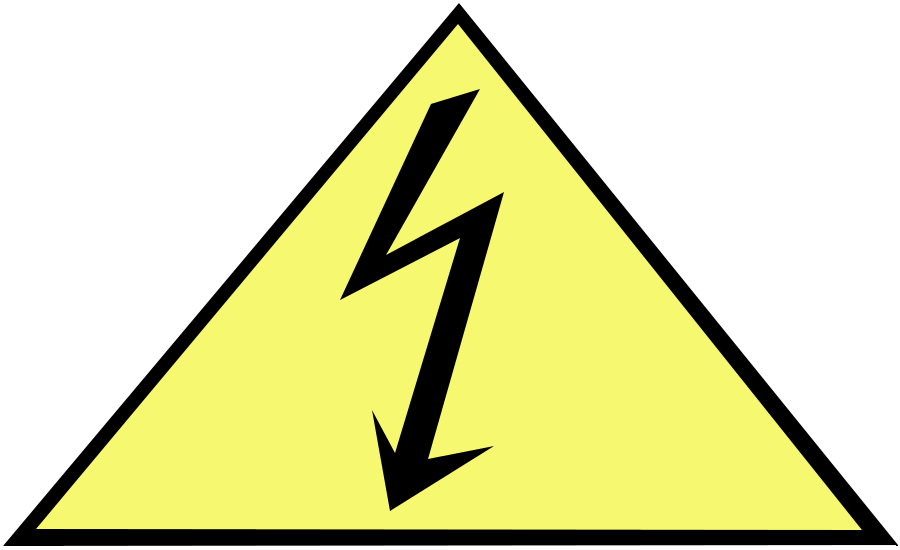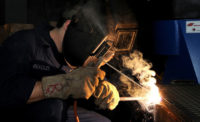Follow electrical safety procedures to prevent electrical hazards. Electricity used in welding is available as:
- single phase, 120 Volts (V) or 240 V; and
- triple phase 575 V in Canada and 480 V in the USA.
Never connect an American triple phase power supply directly to a Canadian triple phase voltage input. You will destroy the transformer and possibly injure yourself.
Make sure that the maximum rating of the welding current matches with the welding electrode in use.
Power supplies
All power supplies must meet the guidelines set by CSA standard C22.1-15 Canadian Electrical Code, 23rd edition, 2015 (in Canada) or ANSI/NFPA 70 (2014) National Electrical Code (in the USA), or by your local electrical utility or other appropriate body.
What precautions should I take to prevent an electrical shock?
- Make sure all cables are in good condition with no bare insulation or frayed wires to minimize the extent of live parts.
- Protect cables from vehicular traffic or other hazards so the cables are not damaged, cut, or pinched.
- Make sure that the rod holder is insulated.
- Do not replace the welding electrode with a bare hand, or with a wet welding glove.
- Always keep the hands and the body dry during a welding operation.
- Avoid standing in water, on wet surfaces, or working with wet hands or wearing sweaty garments.
- Do not dip energized (hot) electrode holders in water.
- Avoid direct contact with the live parts of welding equipment and the workpiece.
- Ground the work or metal to be welded to a good electrical ground. Always insulate yourself from the work and ground.
- Wear proper protective equipment, such as rubber boots and rubber pads, if performing arc welding in wet or high humidity conditions. Wear rubber gloves under the welding gloves.
- If the welding operation must be done on steel or other conductive material, use an insulating mat under the operator.
- Place the welding transformer in the close vicinity. In case of need or accident, the transformer can be switched off quickly to cut off the power source.
- Turn off the welding transformer during breaks or not in use. Detach the remaining welding electrode on the electrode holder before leaving the welding area.
- Do not hold or move the welding electrode holder and the welding return cable simultaneously when moving from one working position to another if the power source to the welding equipment has not been cut.
What should I do in case of electric shock?
- Call for medical help immediately.
- Do not touch the victim with your "bare hands" until he or she is away from the live electrical source.
- Turn off the power at the fuse box or circuit breaker panel if an appliance or electrical equipment is the electrical source or, if you can do it safely, turn off the appliance or electrical equipment and unplug it. Just turning off the equipment is not sufficient.
- If the electricity cannot be turned off and the victim is still in contact with the electrical source, decide if you must move the victim or push the wire away from the victim (call for emergency help if the wire is a high voltage power line).
- Insulate yourself if you must move a victim away from a live contact - wear dry gloves or cover your hands with cloth and stand on dry insulating material like cardboard, wood or clothes. Ensure you have good footing and will not slip or fall when trying to move the victim.
- Use a dry piece of wood, broom or other dry, insulating object or material to move the wire or power source away from the victim or push the victim off the live electrical source.
- Do not move the victim if there is a possibility of neck or spinal injuries (from a fall, for example) unless it is absolutely necessary.
- Give artificial respiration if the victim is not breathing.
- Give CPR if the victim's heart has stopped (only if you are trained in CPR).
- Cover burns with a sterile dressing. There may be a burn where the power source touched the victim and in the area where the electricity left the body (to ground). On the surface electrical burns may not look serious but deeper in the tissue the burn can be severe.
- Keep the victim comfortable, warm and at rest, and monitor breathing.
Source: Canadian Centre for Occupational Health and Safety https://www/ccohs.ca



